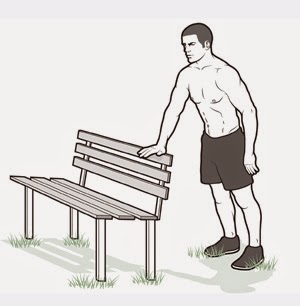Before I get into it, I just wanted to give an update on my condition. The shoulder feels really good. I can barely tell I had the surgery anymore other than the scar and a few awkward overhead arm positions where I still have some minor stiffness/weakness. Interestingly enough, I was really scared to get back into climbing, especially after the elbow problems from this past late summer/early fall, but as it turns out, getting back to climbing was the best therapy I could've done. There are so many dynamic aspects to climbing involving not just the grip and forearms, but moreover the shoulders and back muscles. Things that I really had a hard time training statically/during therapy. I started climbing again full time right after the new year, and now, two months later I see a huge increase in strength and range of motion. I'm thrilled with where I am, physically in that regard. I'd say I'm beyond 95% ROM, and in some ways I am better than I was before the surgery because 1) my tendons aren't ruptured anymore, and 2) I have much better scapular control, which of course is the focus of today's post.
Details on the therapy are found in earlier posts, but there are the actual therapeutic procedures and exercises I did to deal with my scapular control issues, elbow pain, and shoulder hypermobility.
-Prone horizontal abduction on physio ball, 3x10

-Wall walks/slides, x15 (can be done w/theraband connecting both wrists)

-1/2 foam roller (balance) quadruped ball roll, 3x30s
See image: can do this with just one half-foam under knees, adding the one under hands makes it harder. Image shows arm extensions, but can be done pushing/batting ~8lb medicine ball around on floor next to support arm/under shoulder

-1/2 foam roller (balance) frisbee backhand (mimic throwing motiona w/o releasing), x30
Stand on half foam as shown in image, or switching feet parallel to length of 1/2 foam. Go through throwing motions with frisbee. Can work on actual throws/catches if you have a partner.

-Foam + CLX band resisted frisbee backhand (CLX band attached to arm/shoulder and anchored to stationary object i.e. squat rack), x40
See image: For using a disc, just change angle of arm/attachment to adjust for backhands.

-Side laying, solo one-handed (external rotation), 1lb ball toss, external rotation, x30
This can also be done, as this video shows, as a dumbbell lift
See image: Replace dumbell with small 1-2lb medicine ball and do quick short self throw/catches using same hand-position/range-of-motion shown, here.
Upper panel image

Lower panel image
-Side laying, partner toss one-handed (over-handed), 1lb ball toss/throw, x30
^Same as above side-laying exercise but have partner stand ~5-10 feet away and underhand toss medicine ball, which you catch in the position from lower panel image and throw back. Stabilize with scapula!
-Sustained dumbbell scaption, balance on 1/2 foam, x20

-1/2 foam 'statue of liberty' w/red theraband flex bar, 4x30s


-1/2 foam quadruped 'thread the needle', x20 (Video shows motion, but try it weighted pulling on cable machine)
Alternate video, added difficulty from side plank: thread the needle', 20lbs x20

-Standing external rotation w/theraband, 3x20
I prefer the "no money" variation, which forces each side to pull equally.

-CLX band plank walk/crawl, 3-5 steps in each direction x3
Couldn't find the perfect photo/video, but it can be done similar to the resisted bear crawls (sorry for the music). CLX bands have infinite applications and are easy to travel with. Awesome when you're on the go, or traveling to tournaments.
These two images are both showing great exercise variations. The first one, instead of done standing, but in a plank position and walking sideways (crab walk) or forward/backward similar to the resisted bear crawl video is awesome and VERY tiring.


-Standing ball dribble off wall at 90degrees/90degrees (elbow/shoulder), 3x30s
Make sure to keep that angle at 90 degrees both at the armpit and elbow!

Many of these exercises can be made harder/easier by removing/adding a balance ball, bosu ball, half-foam, or standing on a single leg, attaching a resistance band, etc.
This may be my last update so thank you for hanging around and checking everything out of the last 16 months. The shoulder feels great. Now I just need to figure out this lower lumbar/spine issue. Appointment on March 8th. Fingers crossed for a no-surgery solution!


















